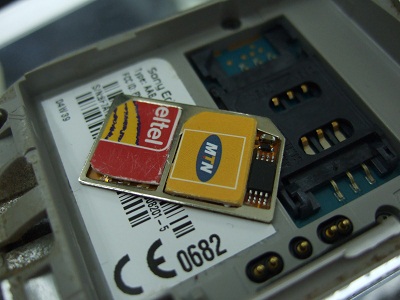A white paper release by the Advanced Development for Africa (ADA) last month laid out the necessary steps to scale mHealth projects in the developing world. Its goal was to provide governments, donors, and the private sector with the essential knowledge to push mHealth from pilot projects to scalable and sustainable solutions.
The report, entitled “Scaling Up Mobile Health: Elements Necessary for the Successful Scale Up of mHealth in Developing Countries” and authored by Jeannine Lemaire, preformed an extensive review of the sector. It focused on multiple case studies and pulled best practices and recommendations from organizations and thought leaders in the sector. With the current mHealth in a transition stage from proof of concept to widespread scale and adoption, there is a need to show key stakeholders that scale and sustainability is possible and necessary to improve health outcomes in the developing world. The ability to be sustainable and scale will push the sector forward and make the case for greater investment by governments, donors, and the private sector.
The author provided nine case studies including TulaSalud, TXTAlert, mPedigree, and ChildCount+. She also included the insights from thought learners in mHealth (David Aylward – Ashoka, Patricia Mechael – mHealth Alliance, Brooke Partridge – Vital Wave Consulting, Anne Roos-Weil – Pesinet, and Getachew Sahlu – WHO).
Through the interviews and case studies, multiple best practices were established in order to properly implement a pilot with the ability to scale and be sustainable in the future. These best practices included the idea that sustainability and scale must be planed from the program’s inception, the necessity to perform a needs assessment for the local region, facilitating collaboration in order to avoid duplication, the inclusion of targeted users and beneficiaries during the development phase, getting buy-in from multiple stakeholders (governments, communities and local healthcare providers), collaborating with local implementation partners, creating partnerships with a focus on scale up, and including M&E to assess the impact off the interventions.
The research also provided recommendations at multiple levels of mHealth policy and development – programmatic, operational, policy, and global strategy. The recommendations were:
Programmatic:
- Integrate the program within existing healthcare structures.
- Employ an integrated solution and/or holistic approach rather than a silo single-solution approach. Identify innovative ways to incorporate other mobile services using cross-sectoral approaches.
- Identify a sustainable and scalable business model that is applicable for large-scale implementations and can bring in valuable strategic partnerships to support scale up.
- Build partnerships with the private sector after a successful pilot phase.
Operational:
- Seek out and invest in building local capacity to minimize costs and support local ownership of the project.
- The software and mHealth application should be geared towards the objectives of the program, suitable for local conditions and designed with the end-user in mind.
- Identify what motivates the end-users, not just what the objectives of the program are. Use incentives to promote the consistent and effective use of the mHealth tool.
- Perform social marketing.
- Empower users through the mobile phone technology, particularly women.
- If an area of the project is failing, fail quickly and publicly; adjust the program accordingly.
Policy:
- Mainstream mHealth in the MOH and relevant government bodies.
- Establish an e/mHealth structure to support the multi-sectoral mainstreaming of mHealth and advise the decision-makers on creating an enabling policy and regulatory environment for mHealth scale up.
- Create an inter-ministerial working group and collective agreement involving stakeholders from the various ministries to support the scale up of mHealth programs.
- Identify and promote the use of specific data, technology and interoperability standards.
- Advocate for the integration of mHealth within local public and private healthcare initiatives; prioritize mHealth training for healthcare workers.
Global Strategy:
- Establish a global network of key institutional players to inform an overall global approach to support the scale up of mHealth in developing countries.
- Establish a global repository of mHealth applications, tools, best practices, recommendations and evaluation data. Institutional players must be willing to share and connect their existing repositories.
- Create frameworks for success targeted towards informing policymakers, project designers and implementers, and donors.
- Advocacy by institutional players to both internal and external stakeholders, particularly to donors, to utilize and integrate mHealth into programs in developing countries.
- Donors and institutional players need to support the evaluation of initiatives in developing countries and the creation of common metrics, indicators and methodologies to evaluate impact on health outcomes.
The ADA is African-based nonprofit which focuses on scaling development in Africa through innovative solutions. This includes building capacity, transferring technology, hosting forums, and establishing cross sector partnerships. Jeannine Lemaire is the Director of eHealth and New Media at Actevis Consulting Group.















































